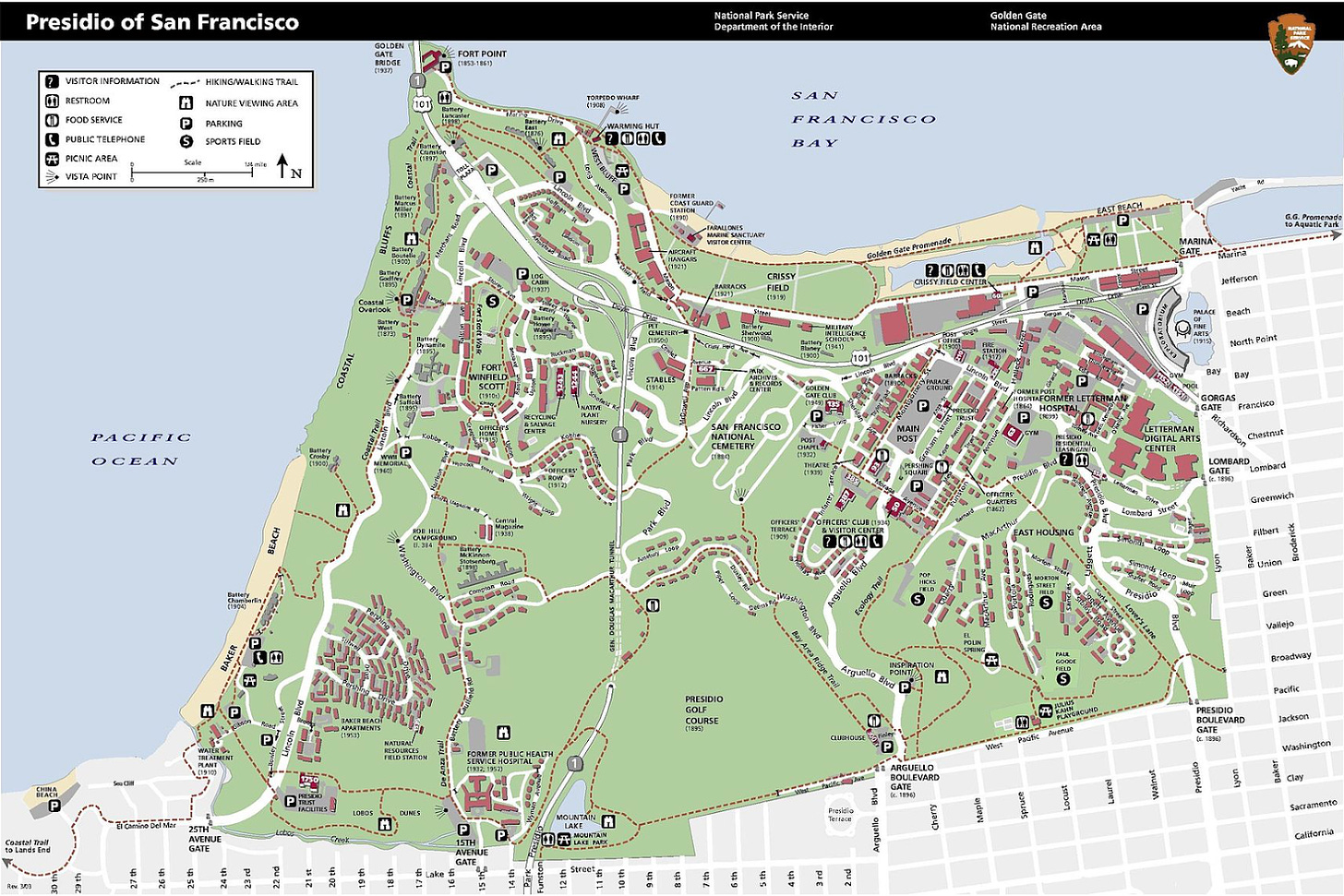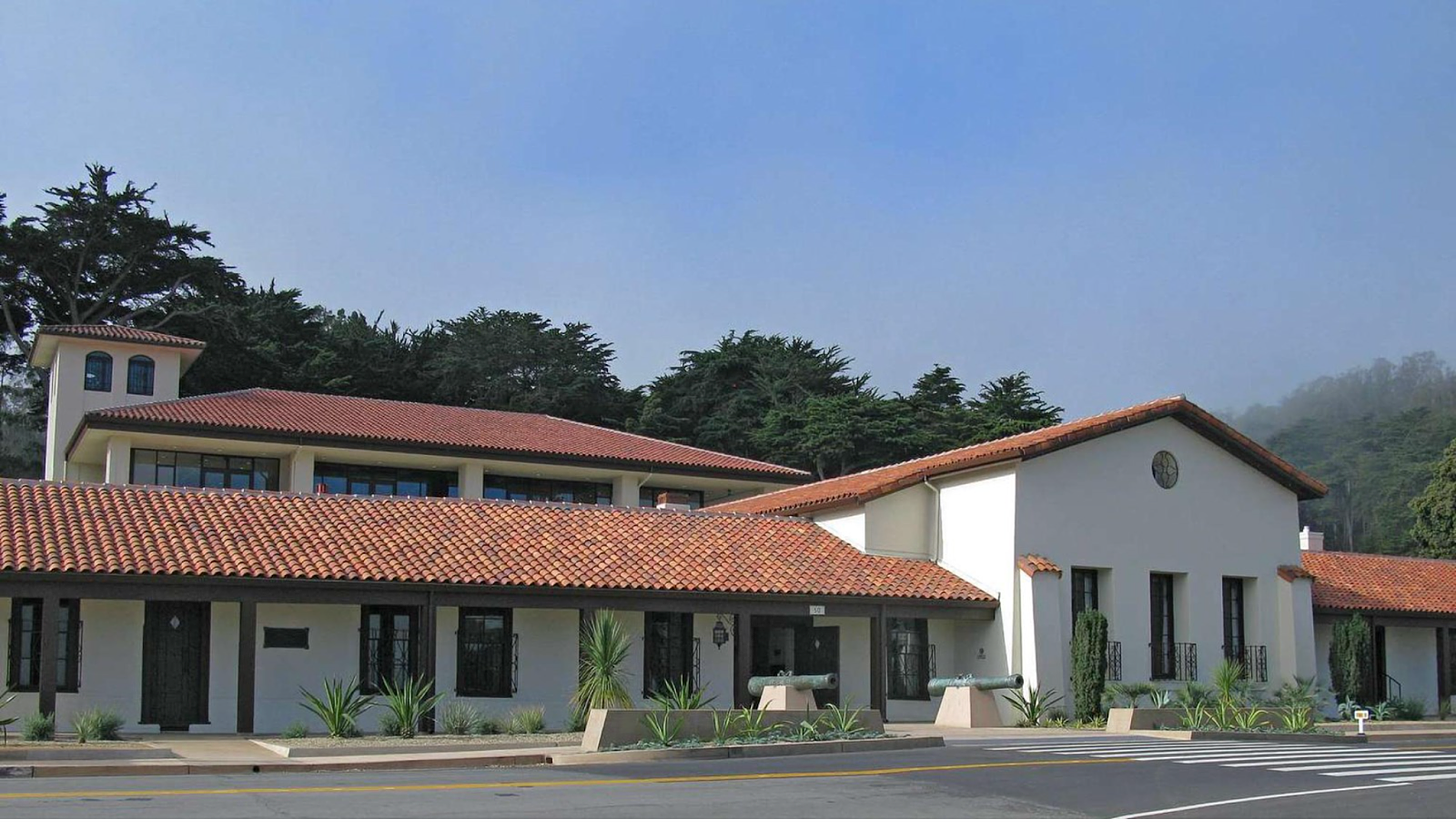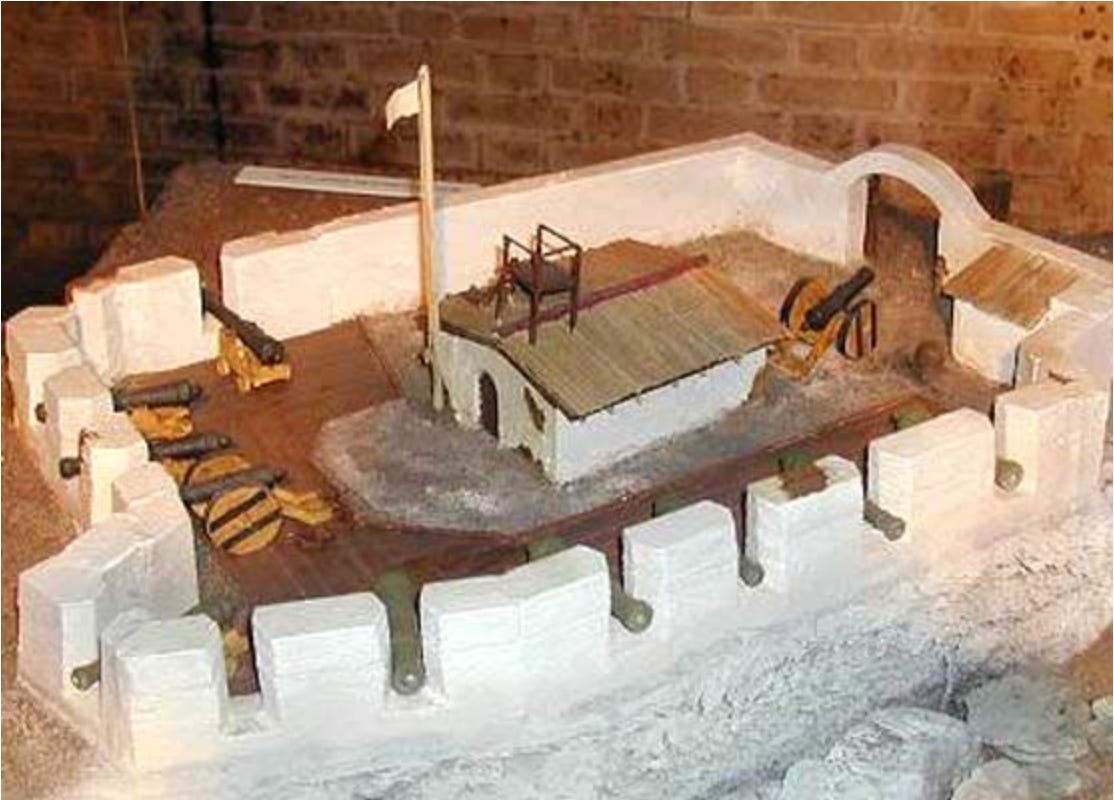The Colonial Legacy of San Francisco: The Presidio Neighborhood
The Spanish beginnings of San Francisco and the mark it leaves on the neighborhood of the Presidio today.
I. Introduction
The Presidio neighborhood of San Francisco lies between the Golden Gate Bridge, the Marina Gate, the Presidio Boulevard Gate, and Baker Beach. It is called the Presidio because it was formerly a fortified military settlement by the Spanish Empire and home to many Spanish soldiers. The name Presidio is a call back to the colonial history of California and the four different presidios that were once active throughout its landscape.
II. The Colonial Force
The Presidio has many different embedded histories on its land. To begin its story, one needs to recognize the Indigenous people of the Muewekma Ohlone, who were forcibly displaced from their home of San Fransico. In the late 16th century, European navigators and colonists continued to explore the coast of California and gained a strong claim on the region. In 1769, the land we now know as San Francisco was discovered by Gaspar de Portolá, a colonial administrator from Spain. The Spanish sought to bring an end to the pioneering of the land and, as ordered by Spanish law, quickly constructed the Presidio. The Presido was intended to guard the Spanish, attack other European powers from the Bay, and set claim to the territory once occupied by the Muewekma Ohlone. It also strengthened their military influence in the area. When encountering the natives, Portolá wrote in his journal, “Finally, tired of mere arguments that were to no purpose, I ordered the sergeant and two soldiers to fire two shots in the air without injuring them, which was sufficient to make them disperse.” The Spanish colonists were willing to do whatever it took to achieve power over the land.
Though the Spanish built the Presidio in anticipation of an attack, when the Spanish Colony of Mexico fought and achieved independence from Spain in 1821, the Presidio was seized and became a Mexican outpost. The Presidio switched hands again when the U.S. Army occupied it and used it after the Mexican-American War. In 1962, The Presidio was then declared a National Historical Landmark District and closed for all military needs in 1989.
III. Landmark Spotlight: Presidio Officers’ Club
One prominent landmark in the Presidio neighborhood is the Presidio Officers’ Club, which contains a Mexican Bistro, and the Presidio History Exhibition, which explores the distinct eras of history in the Presidio. The building was originally constructed in 1776 by Spanish settlers. When the U.S. seized the land of the presidio the space was used for quarters, offices, and social events for the Army. In the 1930’s it was then remodeled into a style known as Mission Revival. As most places began to adopt more East Coast-inspired architecture, places in California especially the Presidio neighborhood, captured their own historical surroundings by mimicking old mission architecture characteristics. Most buildings in the Presidio neighborhood are still in the distinct style today which captures the colonial legacy of San Francisco. When walking through the Presidio most buildings will have white stucco walls, red clay roof tiles, arched doorways, and deep window openings which are all a nod to Spanish colonial architecture. The mix of Spanish-inspired architecture and a Mexican bistro references the colonial past while covering it with a distinctly American feel.
IV. Landmark Spotlight: Fort Point
Though no longer present on the land, during Spain's efforts to protect the Bay and flex their military muscle, they built a fort at the entrance of the San Francisco Bay where the Golden Gate Bridge is today. Named Castillo de San Joaquin, the structure for defense was built during the Spanish creation of the Presidio. When the U.S. military had claim of the Presidio they took down the remnants of Castillo de San Joaquin and built Fort Point which can still be seen in San Francisco today. Fort Point is a multi-storied building built to accommodate ninety cannons and had the goal of defending the Bay. The colonial Spanish pushed out the indigenous people to lay down the foundations of domination and military success, and even as this land switched hands to the Mexicans and then the U.S. Army, the land remained important to military success. Even though the original structure from the colonial times of the Presidio doesn’t stand, the motives of powers that occupied the space represent the colonial legacy of taking land by force and using it for military benefit.
V. Conclusion: The Presidio Today
Today the Presidio is a large San Francisco neighborhood with parks, beaches, residential areas, and historical landmarks. The uses of the Presidio today are much different from the colonial intent as it is now a place where visitors and residents of San Francisco can enjoy the scenery of the coast and explore its many parks. Though the colonial legacy is seemingly buried, I urge any Presidio goers to notice the history around them whether it be looking at the Missionary Revival style architecture or seeing the old cannons and batteries while looking out over the bluffs onto the Pacific Ocean.
Bibliography
"Castillo De San Joaquin, 1793." National Park Service. https://www.nps.gov/goga/learn/historyculture/castillo-de-san-joaquin.htm.
"The Civil War at Golden Gate." National Park Service. https://www.nps.gov/articles/the-civil-war-at-golden-gate.htm.
De Portolá, Gaspar. "Diary of Captain Gaspar De Portolá: Portola Expedition,
1769-1770." Web De Anza. Accessed October 27, 2024. https://webdeanza.org/
portdiary_pg2.html#05_28.
"Mission Revival Style 1890s - 1920s." National Park Service. https://www.nps.gov/articles/mission-revival-architecture.htm.
Presidio. https://presidio.gov/about/history.
Rulska, Anna. "Mexican War for Independence: Mexican-American War." In World at War: Understanding Conflict and Society, ABC-CLIO, 2024. Accessed October 27, 2024. https://worldatwar-abc-clio-com.ehslibrary.idm.oclc.org/Search/Display/758110.
Ryan, Mary P.. Taking the Land to Make the City: A Bicoastal History of North America. Austin: University of Texas Press, 2019. Accessed October 27, 2024. ProQuest Ebook Central.







This was an insightful article about a historic neighborhood. Great work Lucinda!